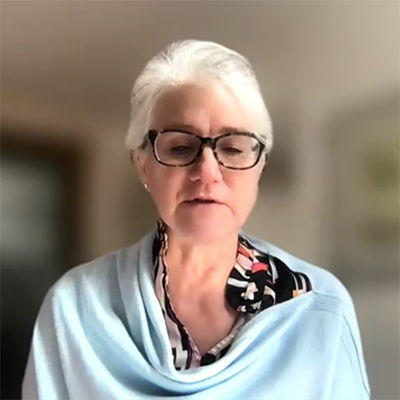
Offshore wind developers and experts, including representatives of three of the six winning bidders in last month’s federal New York Bight auction, see robust supply chain opportunities growing in the Northeast.
 Jordan Shoesmith, Copenhagen Offshore Partners | NECA
Jordan Shoesmith, Copenhagen Offshore Partners | NECAThere is $500 million of state funding available in New York for supply chain infrastructure, including ports, manufacturing and other types of investment, with a potential of $2 billion in total investment, said Jordan Shoesmith, head of business development in the U.S. for Copenhagen Offshore Partners.
The Danish company owns the southeasternmost lease area off Massachusetts and won the smallest lease area in the New York Bight auction in February. Six companies offered more than $4 billion for leases representing 5.6 GW of offshore wind capacity in the New York Bight. (See Fierce Bidding Pushes NY Bight Auction to $4.37 Billion.)
The public funding is not only “a lot of money, but also a huge opportunity to deliver the kind of real supply chain that’s going to last for generations,” Shoesmith said during the Northeast Energy and Commerce Association 2022 Renewable Energy Conference Thursday.
 Carrie Cullen Hitt, NOWRDC | NECA
Carrie Cullen Hitt, NOWRDC | NECASupply chain issues are challenging for everyone in the business, and increasingly, both from a regional and international perspective, leadership from the federal administration and even the states could be quite helpful, said panel moderator Carrie Cullen Hitt, executive director of the National Offshore Wind Research and Development Consortium.
The consortium recently selected six organizations to receive a total of $3.4 million for projects related to supply chain efficiency, asset monitoring and inspection.
“New innovation is happening really quickly in terms of the materials that will be used and where and how they will be produced, so it’s really great to see some response from industry now that we actually see real commitments and deployments start to occur,” Hitt said.
 Nabil Hitti, National Grid Ventures | NECA
Nabil Hitti, National Grid Ventures | NECAWith the “obvious” scaling of OSW in the U.S., “it’s crucial to get the supply chain … moving in the right direction urgently,” said Nabil Hitti, head of U.S. offshore wind at National Grid Ventures, which launched a joint venture, Community Offshore Wind, with RWE Renewables on Wednesday.
The partnership secured the largest lease area in the recent auction, nearly 126,000 acres, where it plans to develop up to 3 GW of capacity.
State solicitations are tending to put more weight on environmental benefits and economic investments that a project will bring, including the developer’s willingness to invest in supply chain development and jobs programs, said Christen Wittman, project director at Attentive Energy, provisional winner of the second-largest lease in the recent auction and a subsidiary of TotalEnergies.
“You’ll see developers submitting into New York, New Jersey and other states really full packages of what the project will look like and what commitments we would intend to make for the full structure and supply chain … but also incorporating elements of demonstrating project viability [and] risk mitigation,” Wittman said.
New Jersey is pushing its next solicitation back to early next year while the state considers an independent, coordinated transmission buildout, and New York released a draft OSW renewable energy certificates solicitation on Friday for comment. The state has not set a date for the official release of the solicitation.
New York’s strategy “is about being savvy with the investments in order to accelerate deployment,” said Adrienne Downey, principal engineer and U.S.-Canada manager at Sweden-based floating project developer Hexicon. Downey served previously as principal engineer for OSW at the New York State Energy Research and Development Authority (NYSERDA), which manages the state’s solicitations.
“We know that we achieve cost benefits if we work on deployment … but also that the Public Service Commission has taken a very enlightened and nuanced view that now we can create and cultivate a self-fulfilling prophecy of a declining cost curve by investing strategically in the supply chain,” Downey said.
Transmission Choices
States and RTOs are taking a more proactive approach to transmission, and in addition to the PJM-New Jersey state agreement approaches, there is also NYSERDA’s approach with the mesh-ready system design, which is also trying to solve these issues with innovative policy choices, Shoesmith said. “I think more and more we’ll see policymakers heading that direction.”
There’s legislation in Massachusetts (H.4515) to include a requirement for a transmission-only solicitation to occur this year, he said.
“We’ll see if it actually gets passed in time for that to happen, but I think it is something we have to think about very proactively,” Shoesmith said.
 Al McBride, ISO-NE | NECA
Al McBride, ISO-NE | NECAISO-NE has been working in partnership with the transmission owners and distribution companies to identify how interconnection studies and cluster studies are done, said Al McBride, director of transmission services and resource qualification at ISO-NE, speaking on a panel about state goals and grid policy.
“That’s in the near term, and in the longer term we’re also undertaking a 2050 study looking at what the transmission system might need to look like after all of these resources have entered and the system is changed to more transportation and heating being provided by electricity,” McBride said.
The grid operator is working to update how resources are accredited for the full capacity market to capture the balance between intermittent and baseload generation, according to McBride.
Others just want to get going with their projects.
“Put turbines in the water and let people see what the actual implications are and the actual benefits, and I think it becomes a lot less intimidating,” Wittman said. “To kick off site investigations by the end of the year is key for us.”

